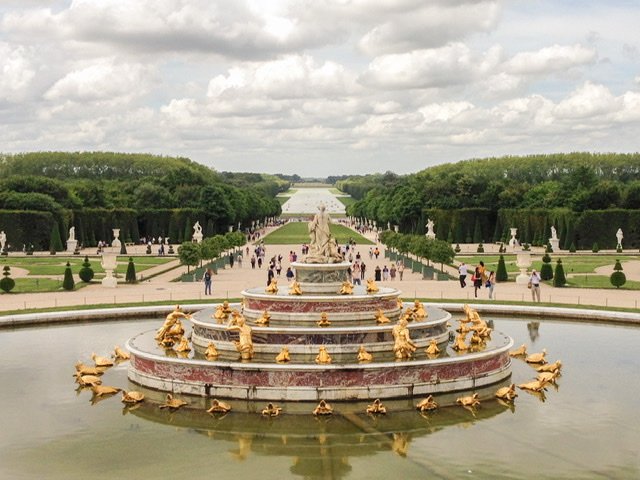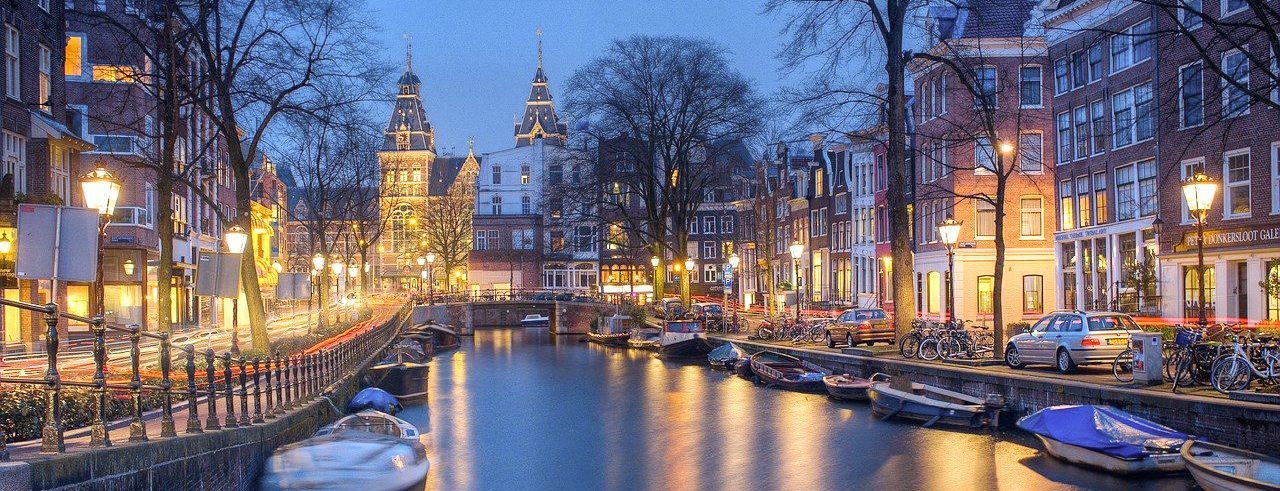
The Magnificent Estate of Versailles
When Steve and I began our full-time travels in 2018, the first two cities we visited were Barcelona and Paris. Talk about setting the bar high.
Between these two cities, three places ruined us for all others:
La Sagrada Familia in Barcelona
Versailles (near Paris)
Cemetery Montmartre in Paris
You can read about why we think Cemetery Montmartre is the coolest cemetery in Paris here.
But now, it is my pleasure to share our impressions of The Palace and Estate of Versailles with you.
The Versailles We All Know
In 2005, I visited Paris with my daughter Stephanie as part of a school trip. One of the activities was a tour of the Palace of Versailles.

Our tour included the Palace and the Palace Gardens. We marveled at the over-the-top elegance, including the hall of mirrors, heard the stories about people using the corners in the palace as restrooms during its heyday, and saw where Marie Antoinette gave birth in front of an audience. Here is an interesting article about royal birthing practices.

Then we spent some time in the palace’s gardens before heading back to Paris.

I came away from that experience amazed by the opulence and overwhelmed by the crowds. Little did I know that I had just scratched the surface of Versailles.
The Estate of Versailles includes the Palace, the gardens, the park, the Trianon estate, and several buildings in town. It covers over 800 hectares or almost 2,000 acres.
A Second Look
Flash forward thirteen years to 2018. Steve and I spent a month in Paris as part of our new life as full-time travelers. We first visited Versailles as part of a bicycle tour on a dismal June day.
As we entered the grounds, we were surrounded by open fields full of sheep!

We then rode through the grounds where we visited the Trianon Estate, viewed several gardens, and enjoyed lunch on the patio at La Flottille.

At the end of our bicycle tour, we saw the Palace of Versailles. It was just as glorious as I remembered, and it left a lasting impression on Steve. Every time we have visited a palace or grand home since then he says, “It’s not Versailles.” Indeed, not too many places can match the grandeur and mystique of this amazing building.
A Third Visit
Our tour through the palace during our bicycle tour had been rushed, so we decided to go back on our own another day.
After we braved the crowds in the palace once more, we spent the rest of the day exploring the grounds. Even after two days of visiting, I feel as if we barely got to know it. We hope to one day return to the town of Versailles for an extended time and spend several days exploring the estate.

A (Very) Brief History of Versailles
This phenomenal place began as a simple hunting lodge for King Louis XIII. A small chateau was built on the site in 1624.
The construction of the palace began in 1661 under Louis XIV. The palace and its elaborate gardens were completed in 1710.
In 1687 King Louis XIV had the Grand Trianon Palace built on the palace grounds.
King Louis XV added the Petite Trianon Palace to the grounds in 1768.
In 1783, during the reign of Louis XVI, the Queen’s Hamlet (Hameau de la Reine) was built.
The Treaty of Versailles, which ended World War I between Germany and the Allies, was signed in the Palace of Versaille in 1919.
The Trianon Estate
This section of the estate consists of 3 main areas described below: The Grand Trianon, The Petit Trianon, and The Queen’s Hamlet. The estate grew from the time of Louis XIII through Louis XVI. I find it hard to keep the Louis straight. I wish they had been more original when naming their heirs.
The Grand Trianon
This beautiful creation of pink marble and a type of rock called porphyry is located in the northwest corner of the estate. It was built in 1687 at the request of Louis XIV of France, who was known as The Sun King. He had it built as a place to escape the structures of life in the Palace of Versailles and spend time with his favorite mistress, Marquise de Montespan.
Here are 7 Fascinating Facts about Louis XIV.
The Palace has two wings. Each housed a royal apartment. They are connected by a colonnade called The Peristyle.

The furnishings were lost during the French Revolution. They were replaced during the rule of Napoleon Bonaparte. Those are mostly what you will see in the palace.
This page on the en.chateauversailles.fr website is full of fascinating information about this palace.
The Grand Trianon Palace in history:
On June 4, 1920, the Trianon Treaty was signed here. The treaty formally ended World War I between most of the Allies of World War I and the Kingdom of Hungary. The result was that Hungary lost 70% of its land and all of its seaports. It remains a source of sorrow and anger for Hungarians a century later. Learn more about that in the article “Hungary: Why is the Trianon Treaty So Controversial?” from Kafkadesk. From 1963 to 1966, the Grand Trianon was restored for use by President Charles de Gaulle.
The Petit Trianon
In the mid-1700s King Louis XV decided to build a chateau in the middle of his gardens. The three-story neoclassical building was completed in 1768. When Louis XV died in 1774, Louis XVI ascended the throne. He gifted the Petit Trianon to his wife, Marie-Antoinette.

The young queen used the Petit Trianon to escape the formality and demands of royal life. It is reported that she was in the garden in October of 1789 when she was told of the armed crowd that would force the royal family to Paris during the early part of the French Revolution.
For one year, from 1794 to 1795, the furniture, artwork, and other valuables were auctioned off.
During the revolution, the building was used as a hostel and a tavern, causing it to fall into disrepair. The building was restored by Napoleon I to be used by his sister and by Empress Marie-Louise.
Learn more about The Petit Trianon here.
The Queen’s Hamlet
A century after The Grand Trianon Palace was built, a model village was added to the Trianon Estate. This village of small, rustic buildings formed a crescent around an artificial lake. It included a working farm that was used for the royal children’s education.

The buildings were not built for longevity and suffered from the weather during the French Revolution. From 1810-1812 Napoleon had most of them restored. A few were beyond repair and were demolished.
The hamlet underwent various restoration projects in the 20th century as well. One done in the 1930s was made possible by a donation from John D. Rockefeller.
In 2006 the farm was reconstructed and is currently home to many animals which are looked after by the Foundation for Animal Welfare.
Here is more information about this wonderful hamlet.
And There is Even More!
Did you know that the gardens on the estate boast over 200 statues, making it the largest open-air sculpture museum in the world?
There is also an orangery featuring orange, lemon, pomegranate, palm, and oleander trees. Some of the trees are more than 200 years old. They are housed in the Orangery during the winter and displayed outside in the summer.
There are also groves, which are like little parks in the woods, numerous fountains, and pathways.

As if that weren’t enough, you can visit the Gallery of Coaches in the Great Sables. Here you will marvel at the intricacy of the horse-drawn carriages of the past.
Whoo, That’s a Lot to See
All this information can be overwhelming. One thing is certain, the Estate of Versailles will provide days worth of exploration.
While researching this article, I found out how little I know about Versaille’s complex and fascinating history. I have done my best to be accurate. If you find something that is incorrect, kindly let me know. Thank you.
Safe and happy traveling,
Linda
One Last Thing
There is a fundraising campaign on the Chateau de Versailles website to replace funds lost because of reduced attendance during the pandemic. If you love Versailles and can afford to help, here is the information.
